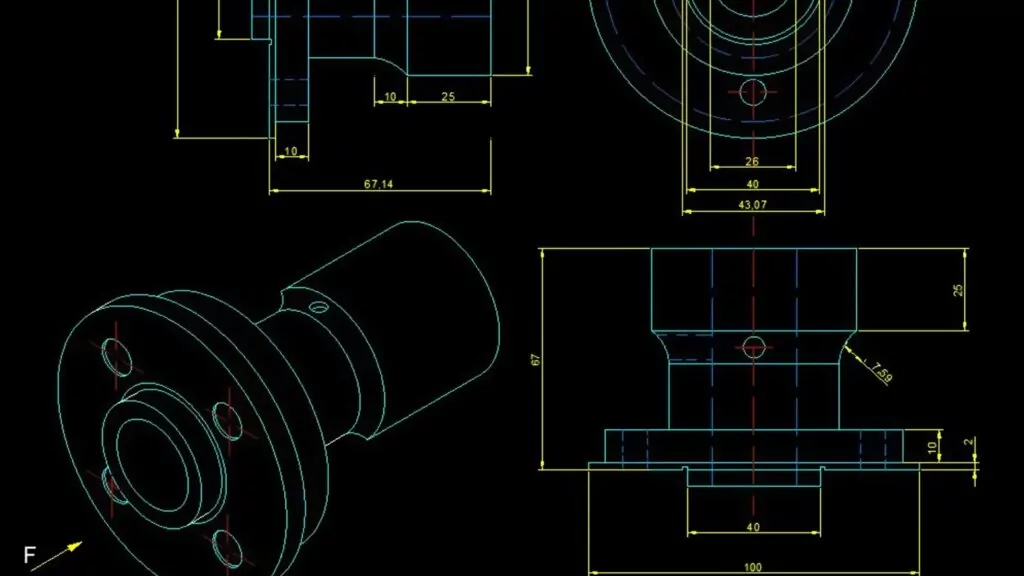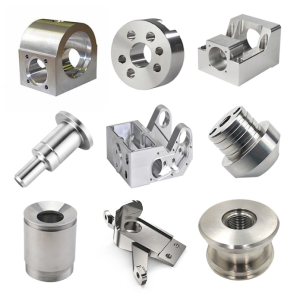In the evolving world of design, technology plays a pivotal role in transforming ideas into reality. One of the most influential tools driving this change is Computer-Aided Design (CAD), a technology that has reshaped industries such as engineering, architecture, manufacturing, fashion, and automotive. CAD not only simplifies the design process but also enhances precision, reduces costs, and fosters innovation. This guide will take you through the essentials of CAD, its diverse applications, key benefits, and emerging trends shaping its future.

What is Computer-Aided Design (CAD)?
Computer-Aided Design (CAD) refers to the use of computer software to assist in the creation, modification, analysis, or optimization of a design. CAD enables designers and engineers to create accurate digital models and technical drawings. Unlike traditional methods that relied on manual drafting, CAD allows the creation of both 2D and 3D models, providing a more realistic and dynamic view of designs.
CAD has become indispensable across various industries, as it simplifies complex designs and processes, reduces human error, and facilitates collaboration across teams and geographies.
A Brief History of CAD
CAD’s journey began in the 1960s when it was used primarily as a drafting tool on expensive mainframe computers. Early CAD systems were bulky, non-interactive, and available only to large corporations. As personal computing technology advanced in the 1980s, CAD software became more accessible, and the industry saw a surge in its adoption. Over the next few decades, CAD transformed into a powerful tool for engineers, architects, and product designers, offering features like 3D modeling, simulations, and rapid prototyping.
Today, CAD software has evolved into an all-encompassing design platform, offering everything from conceptual design and analysis to manufacturing and construction planning.
Types of CAD
CAD software is versatile, and different industries use various types of CAD depending on their needs. Here are the key types of CAD:
| Type of CAD | Description |
|---|---|
| 2D CAD | Involves creating flat, two-dimensional drawings such as blueprints and floor plans. Ideal for architectural or mechanical design. |
| 3D CAD | Used for creating three-dimensional models, giving a more realistic representation of the product. Common in product development, architecture, and engineering. |
| Freeform CAD | Facilitates the creation of complex and organic shapes, often used in industries like fashion, automotive, and entertainment. |
In addition to these, other specialized types of CAD software are available for specific needs, such as parametric design, surface modeling, and solid modeling.
CAD Applications Across Industries
CAD has widespread applications in a multitude of industries. Here’s a look at how different sectors are utilizing CAD technology:
Engineering and Manufacturing
CAD is integral in engineering projects, from designing mechanical components to infrastructure like bridges and roads. In manufacturing, CAD serves as the basis for creating digital prototypes and refining product designs. This digital approach reduces costly errors in the production process and enhances overall productivity.
| Engineering Applications | Description |
|---|---|
| Automotive | CAD is used to design car parts, test aerodynamics, and simulate safety features. |
| Aerospace | CAD helps in designing aircraft and spacecraft, including structural and mechanical components. |
| Mechanical Engineering | CAD is used to create detailed designs for machinery, tools, and manufacturing processes. |
Architecture and Construction
Architects use CAD to create detailed floor plans, elevations, and cross-sectional views of buildings. Interior designers also leverage CAD to visualize the interior layout, optimize space usage, and experiment with design elements.
BIM (Building Information Modeling), a specialized form of CAD, has gained popularity for managing complex construction projects, enabling architects, engineers, and contractors to collaborate more efficiently.
Fashion and Apparel
In the fashion industry, CAD tools are used for digital clothing design, fabric simulation, and garment pattern creation. CAD allows designers to experiment with different materials, colors, and cuts before production, making the design process faster and more cost-effective.
Electronics and Consumer Products
CAD is widely used to design everything from smartphones to home appliances, allowing for the creation of detailed, accurate product models. CAD tools help engineers simulate how a product will perform under real-world conditions and optimize designs for manufacturability.
Key Benefits of CAD
Precision and Accuracy
CAD offers unparalleled precision. Unlike manual drafting, where human error can distort measurements, CAD ensures that every detail of the design is accurate to the millimeter. With 3D visualization, designers can easily detect flaws early in the design process.
Increased Efficiency
CAD eliminates the need to start over with every design revision. Changes can be made quickly and accurately, saving time and resources. Additionally, the software allows for parametric design, where alterations to one part of the design automatically update related components, ensuring consistency.
3D Visualization and Simulation
One of CAD’s key advantages is the ability to create 3D models, enabling designers to view products from multiple angles. This 3D visualization improves understanding of the final product and allows for design testing and simulation before production begins. In some cases, designers can simulate real-world conditions to test product performance.
Collaboration and Sharing
CAD files are easily shared between teams, enabling collaborative design across different locations. The ability to collaborate in real-time is especially important for companies with global operations.
Cost Savings
By catching errors early, optimizing designs for manufacturability, and facilitating rapid prototyping, CAD helps companies reduce the costs associated with physical prototyping and production.
Challenges of CAD
While CAD is a powerful tool, there are challenges to consider:
| Challenge | Description |
|---|---|
| Software Costs | High-end CAD software can be costly, as can the hardware required to run it effectively. |
| Learning Curve | Advanced CAD tools have a steep learning curve, requiring significant training and practice. |
| Over-Reliance | Over-reliance on CAD software could stifle creativity, as designs may be limited by the capabilities of the software. |
Popular CAD Software and Tools
There is a wide variety of CAD software available, each catering to different industries and design needs. Some of the most popular CAD software includes:
| Software | Primary Use |
|---|---|
| AutoCAD | Versatile tool for 2D and 3D design, widely used in architecture and engineering. |
| SolidWorks | Primarily used for mechanical design and product development, especially in 3D modeling. |
| CATIA | Advanced tool for surface modeling, commonly used in aerospace and automotive industries. |
| Fusion 360 | A cloud-based tool that integrates 3D CAD, CAM, and CAE, ideal for product design and development. |
| Revit | Focused on Building Information Modeling (BIM), used by architects and construction professionals. |
Future Trends in CAD
The future of CAD is exciting, with numerous technological advancements on the horizon. Key trends shaping the future of CAD include:
Cloud-Based CAD
Cloud computing has made CAD more accessible, as designers can now collaborate and work on designs from any location. Cloud-based CAD eliminates the need for powerful local hardware and reduces costs, making it easier for small businesses and startups to adopt the technology.
Artificial Intelligence (AI) and Machine Learning (ML)
AI and ML are being integrated into CAD software to automate routine design tasks, suggest design improvements, and predict potential design flaws. This makes the design process faster and more efficient, while also enhancing creativity.
Virtual and Augmented Reality (VR/AR)
VR and AR will transform the CAD experience by providing immersive environments where designers can interact with their 3D models in real-time. This will improve design visualization, making it easier to communicate ideas to clients and stakeholders.
Generative Design
Generative design is an emerging trend that leverages algorithms to create optimized design solutions based on specified parameters. This technique enables designers to explore a vast range of design possibilities quickly, leading to innovative and highly efficient results.
Conclusion
Computer-Aided Design (CAD) has revolutionized how we approach product development, architecture, engineering, and other fields. By offering precision, efficiency, and powerful visualization tools, CAD allows designers to bring their ideas to life with greater ease and accuracy. As CAD continues to evolve, integrating technologies like AI, cloud computing, and VR, it will undoubtedly play an even more crucial role in shaping the future of design.
With the vast array of benefits and applications, mastering CAD is essential for anyone involved in product development or design. Whether you’re in engineering, architecture, or fashion, embracing CAD tools will help you stay competitive in an increasingly digital world.


